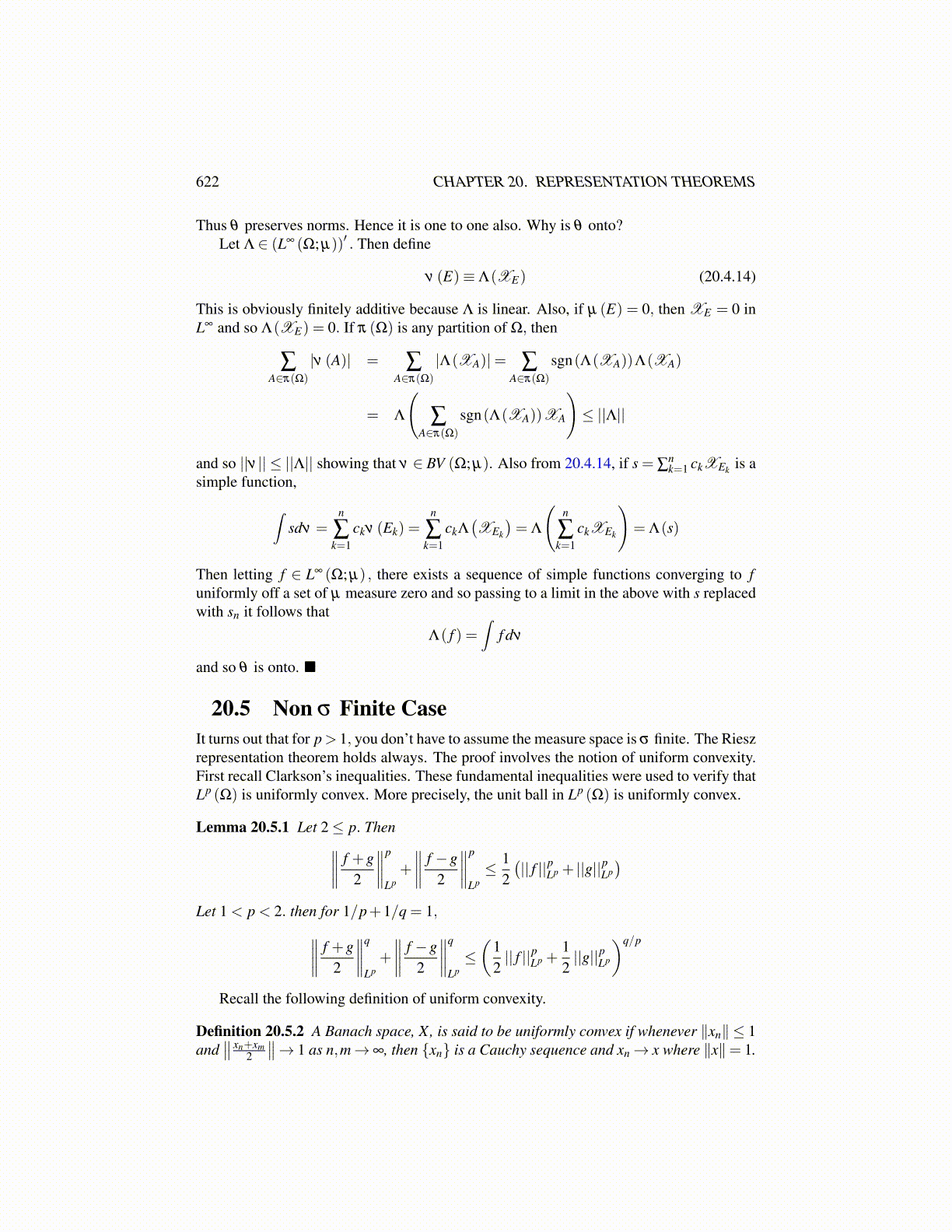
622 CHAPTER 20. REPRESENTATION THEOREMS
Thus θ preserves norms. Hence it is one to one also. Why is θ onto?Let Λ ∈ (L∞ (Ω; µ))′ . Then define
ν (E)≡ Λ(XE) (20.4.14)
This is obviously finitely additive because Λ is linear. Also, if µ (E) = 0, then XE = 0 inL∞ and so Λ(XE) = 0. If π (Ω) is any partition of Ω, then
∑A∈π(Ω)
|ν (A)| = ∑A∈π(Ω)
|Λ(XA)|= ∑A∈π(Ω)
sgn(Λ(XA))Λ(XA)
= Λ
(∑
A∈π(Ω)
sgn(Λ(XA))XA
)≤ ||Λ||
and so ||ν || ≤ ||Λ|| showing that ν ∈ BV (Ω; µ). Also from 20.4.14, if s = ∑nk=1 ckXEk is a
simple function,
∫sdν =
n
∑k=1
ckν (Ek) =n
∑k=1
ckΛ(XEk
)= Λ
(n
∑k=1
ckXEk
)= Λ(s)
Then letting f ∈ L∞ (Ω; µ) , there exists a sequence of simple functions converging to funiformly off a set of µ measure zero and so passing to a limit in the above with s replacedwith sn it follows that
Λ( f ) =∫
f dν
and so θ is onto.
20.5 Non σ Finite CaseIt turns out that for p> 1, you don’t have to assume the measure space is σ finite. The Rieszrepresentation theorem holds always. The proof involves the notion of uniform convexity.First recall Clarkson’s inequalities. These fundamental inequalities were used to verify thatLp (Ω) is uniformly convex. More precisely, the unit ball in Lp (Ω) is uniformly convex.
Lemma 20.5.1 Let 2≤ p. Then∥∥∥∥ f +g2
∥∥∥∥p
Lp+
∥∥∥∥ f −g2
∥∥∥∥p
Lp≤ 1
2(|| f ||pLp + ||g||pLp
)Let 1 < p < 2. then for 1/p+1/q = 1,∥∥∥∥ f +g
2
∥∥∥∥q
Lp+
∥∥∥∥ f −g2
∥∥∥∥q
Lp≤(
12|| f ||pLp +
12||g||pLp
)q/p
Recall the following definition of uniform convexity.
Definition 20.5.2 A Banach space, X, is said to be uniformly convex if whenever ∥xn∥ ≤ 1and
∥∥ xn+xm2
∥∥→ 1 as n,m→∞, then {xn} is a Cauchy sequence and xn→ x where ∥x∥= 1.